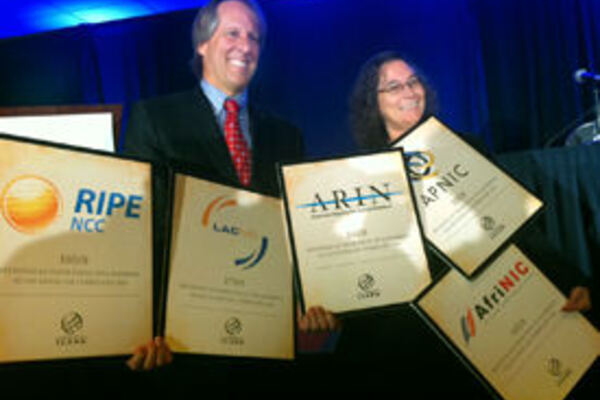Last IPv4 address blocks assigned, ICANN pushes IPv6 adoption
James Delahunty
3 Feb 2011 22:35

On Thursday, the last top level block of free Internet Protocol version 4 (IPv4) addresses was assigned, igniting a discussion about the future of the Internet and its rapid expansion to more locations and devices.
IPv4 uses 32bit addressing to route data packets across the Internet, providing for 232 addresses, or 4,294,967,296 addresses. Internet Protocol version 6 (IPv6) is intended to succeed IPv4. Using a 128-bit address, the IPv6 address space allows 2128 addresses, or around 340 undecillion unique addresses (1 undecillion == 1,000,000,000,000,000,000,000,000,000,000,000,000). That means an address pool that is a billion-trillion times larger than IPv4.
IPv4's address format uses a Dotted Decimal Notation, such as "209.62.87.157", to enable communication between devices over the Internet. IPv6 addresses are composed of four hexadecimal digits separated instead by colons, such as "2001:0db8:85a3:0000:0000:8a2e:0370:7334".
IPv6 certainly has lasting power because of the mind-numbing numbers involved. The IPv4 pool is now technically completely exhausted, an event that has been anticipated for years (although a lot of free addresses still remain in most assigned IPv4 blocks and will continue to be allocated for the time being.)
"This is a major turning point in the on-going development of the Internet," said Rod Beckstrom, President and Chief Executive Officer of the Internet Corporation for Assigned Names and Numbers (ICANN).
"No one was caught off guard by this. The Internet technical community has been planning for IPv4 depletion for some time. But it means the adoption of IPv6 is now of paramount importance, since it will allow the Internet to continue its amazing growth and foster the global innovation we've all come to expect."